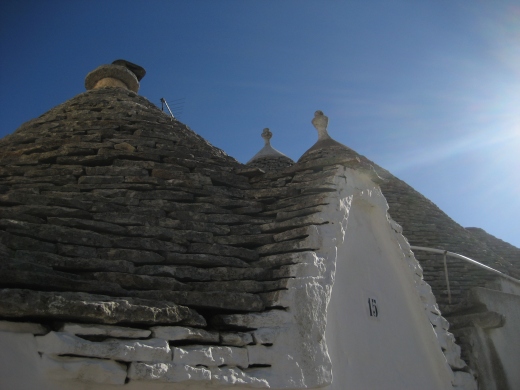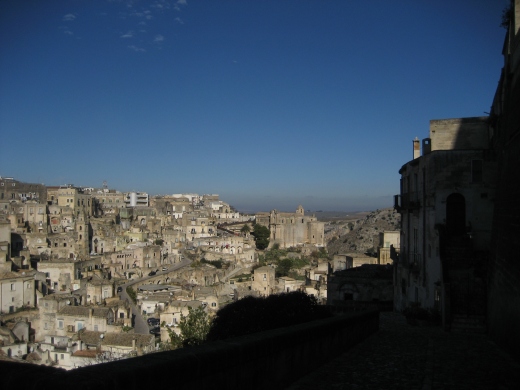This, dear readers, is the end. I would never permit myself to continue blogging without an actual interesting life about which to blog and, quite frankly, I don’t expect such a scenario to soon arise. First I return to that most blissful, perfect, peaceful monotony of home, family, hot chocolate and Christmas (I suppose we can start thinking about it). After these halcyon days too have come to a close, reality will settle in: classes, rehearsals, actual obligations, the like. This is a happy end, and a sad one; a thoughtful end, but above all an immensely grateful one. It has been a semester like none other, and it has been an honor and a joy to share it with you in this way. I cannot possibly express my gratitude to the innumerable people who have made it possible, and made it exquisite.
Where then can I even begin the end of the incomparable adventure I have had in Rome? As all things seem to in this great city, I think I must begin with tourists. I actually first articulated the following to myself as I was relaxing outside the Louvre in Paris, marveling at the hoards of people who were taking incessant photos of themselves juxtaposed on just about anything imaginable. I understand well the desire to remember a place that is special, but what I couldn’t comprehend was the need to insert oneself onto that place. When there is so much beauty and history present, how can plastering my smiling face on top of it possibly add anything to its value? Would not the implication that I could be merely an insult to the splendor of the place? The immediate problem this posed, of course, was that I too was there. Though I wasn’t in any of them—and wouldn’t have been making peace signs if I were—I was snapping my pictures just the same. Even worse, infinitely worse, I was sticking them on a blog! The truth, after much reflection, revealed itself somewhere between my arrogance and their superficiality, and of course, it’s all about Beauty.
If Beauty is to be anything but our subjective feelings of elation or an algorithm of random synaptic activity, it must be the type of thing that transcends us. Its very nature must demand that, in encountering Beauty, we become lost in Her vast profundity. This is not merely a figure of speech. We truly must “die to self,” realizing how miniscule we are compared to, well, eternity and infinity. We stand “gazing at the sky,” and must ask: how can something so wonderful truly be real? The answer to this question is simple: “I am.” In this Truth, but even in the basic ability to seek it out, to ask this question, one finds not man’s minuteness but his greatness. Man alone among the creatures has reason, and compassion, and all the elements necessary to seek out and find Beauty and make her his own. But far beyond this grandiose extolment of humanity, these truths must strike us on a personal level. I have a unique perspective to capture and reflect beauty in an unrepeatable way; you hold Beauty within you in a way that no one else ever can or will. And so by the very same principle that demands that any encounter with Beauty—by its transcendence—take root in us and change us, in a sense too this encounter must change Beauty. She acquires a new face through which to shine; She lives in each of us in a new way, unimaginable without our participation. We fall into grave error when we start to believe that our involvement is that which makes a thing beautiful, or that Beauty would fail to be Beauty without us. But, properly understood, it is an incomparable treasure, an O magnum mysterium, that Beauty should come to dwell among us in this way.
What is the point of all this? To vindicate tourists? While I understand better the motivation to commemorate one’s participation in something greater than the self—and this has curbed my arrogance—I would still fault most tourists with greatly limiting the scope and depth of their interaction with Beauty. But tourists are decidedly not the point. Is it instead to prove—mostly to myself—that puns, wine and idleness haven’t completely deteriorated my mind this semester? Perhaps a little. Ultimately, though, it comes down to this: before departing, when I described the things I anticipated the most, I rattled off a list of experiences. Eat good food; drink good wine; go to Mass at a different church every day. I would still list these among the best aspects of my time here, but not as experiences. I would be hard pressed to remember every glass of wine I’ve had (not in that sense), or to tell you the difference between Santa Maria ai Monti and Santa Maria dei Miracoli, or any of the other hundreds of Santa Marias. Of course, some wines and some Santa Marias stand out, but if I look at my time here as a sequence of experiences, it will fade away astonishingly quickly. Instead, I consider myself blessed to have grown in the ability to appreciate my time here as a tapestry woven with innumerable rich threads, or as Beauty living within me—and in a sense you too, faithful reader—and changing me in real, subtle ways. Maybe that’s what the tourists miss (though again, they are not the point).
Perhaps I ought to justify the claim I’ve made of “In a real way,” lest this all seem like pretty words and disconnected musing. For instance, I doubt that the rest of my life will give anything but limited occasion to use the Italian language. But, I am still enriched by having learned enough of it to know that humanity shares universally in experiences like going through a breakup at 11 PM or being kicked off a train because you “lost your ticket in Bologna” (both of which I’ve overheard, understood, and wished I hadn’t). Even fart noises are universally funny. Or, for the first time ever, I have lived this semester mostly dependent on my own capacity to cook Italian-esque food. Though replete with “experiences,” I would do a disservice to this adventure if I remembered it solely as such. Even the trivial things lose their triviality when viewed properly as reflections of Beauty unique to the wonderful places I’ve been: I finally learned how to spell ‘Trastevere” correctly (there’s no ‘n’); I realized that in Italy, Padre Pio, Francis of Assisi and Catherine of Siena might be the only canonized people to have ever lived (or at least mattered…); why is the vast majority of graffiti here some variation of “ti amo [so and so]”?! A semester is a success indeed if it opens your eyes to the world’s unpredictable richness, because this realization stays with you and changes your entire life, no matter where you are.
Even with the perfect segue I just made possible, I promised myself not to conclude with some nonsense about this being “not really the end, but just another beginning,” because that’s ridiculous and horribly clichéd. This is the end. I’m going home in mere hours. I’m removing wordpress.com from my bookmarks. Basta. But, it is not a barren end. It is an end saturated in the fertile Beauty that irrevocably changes us, ennobles us and enriches us; a beauty that cannot die because it lives within us. This is the only end befitting of a city that is, truly, eternal.














































